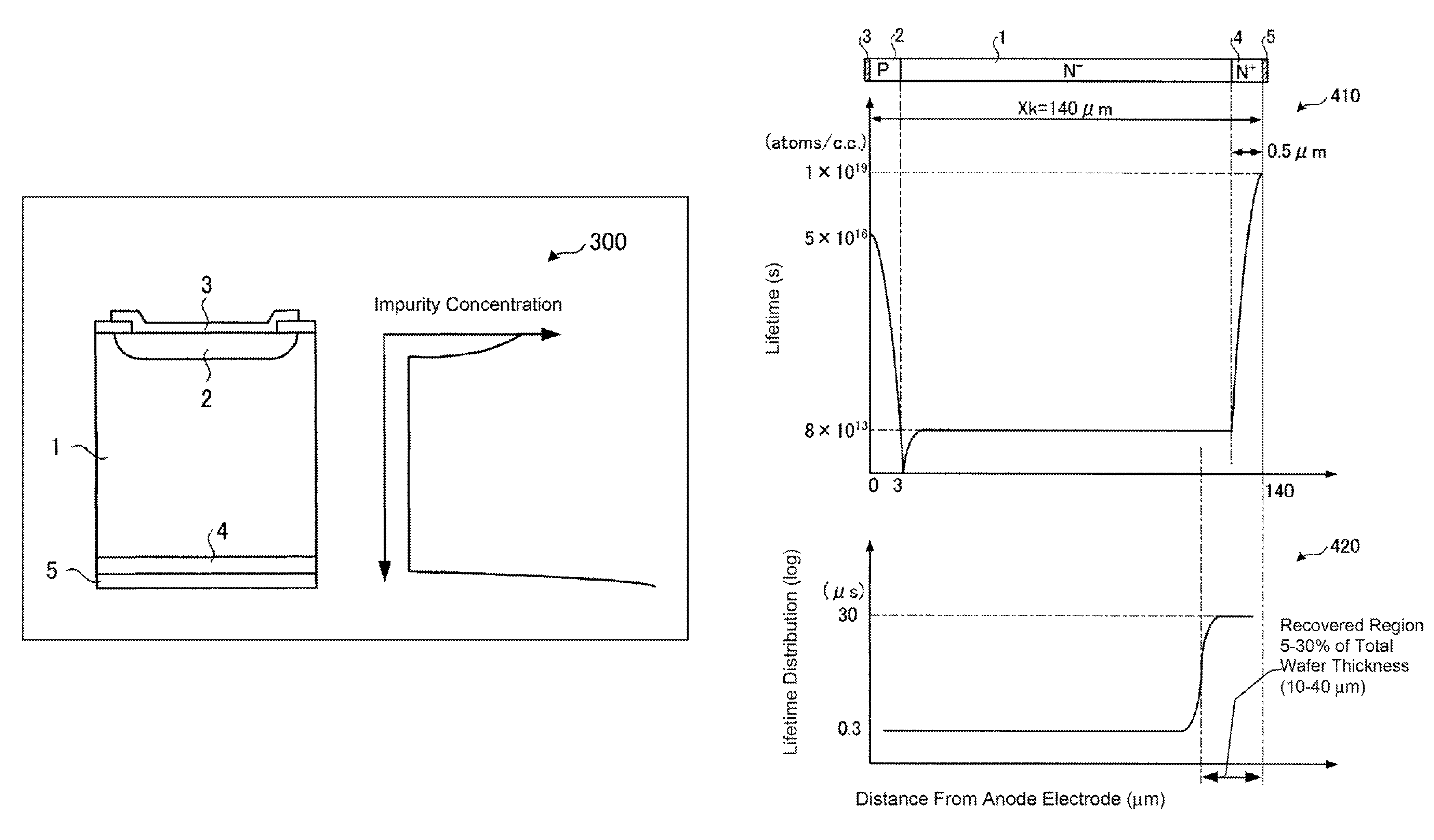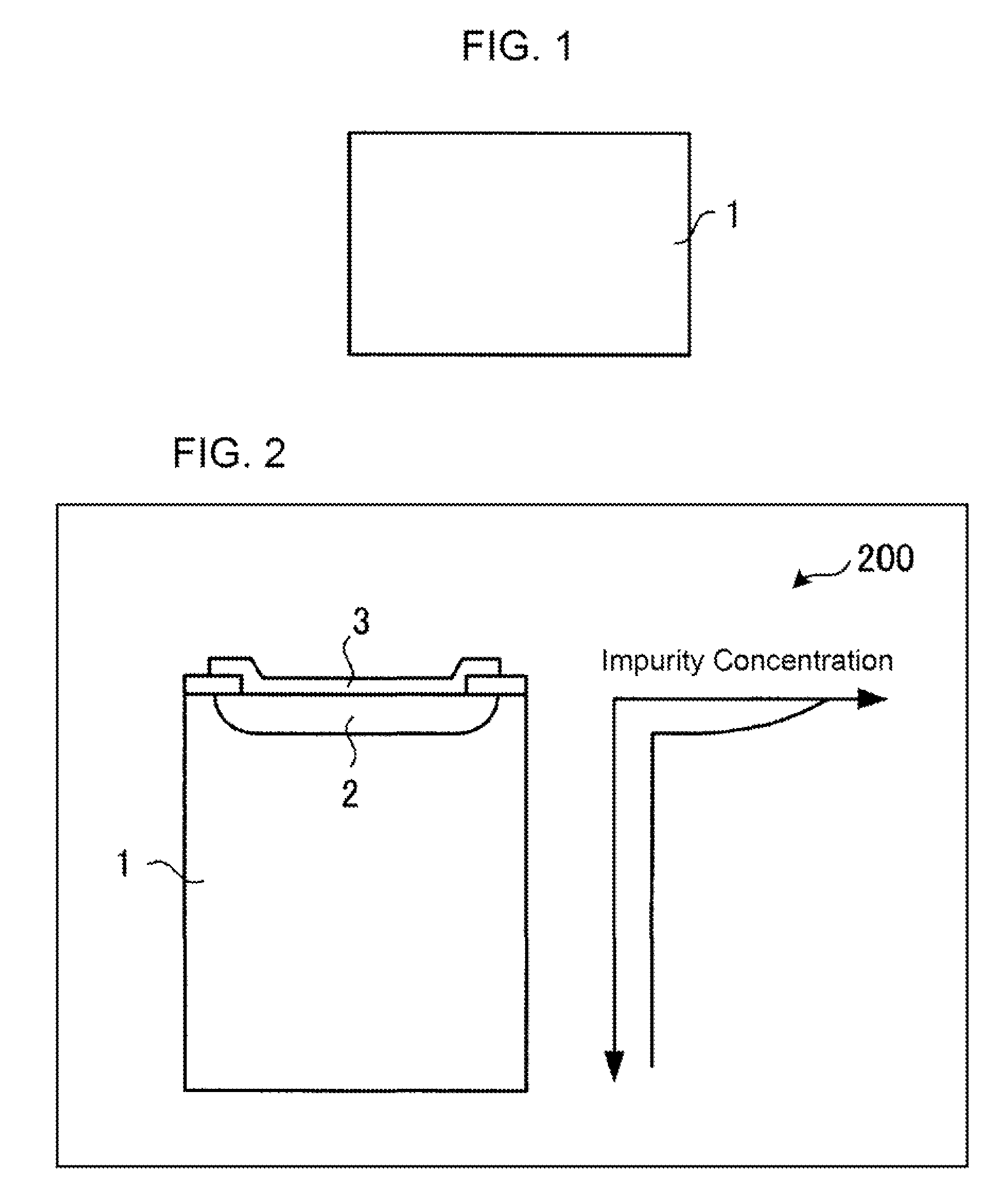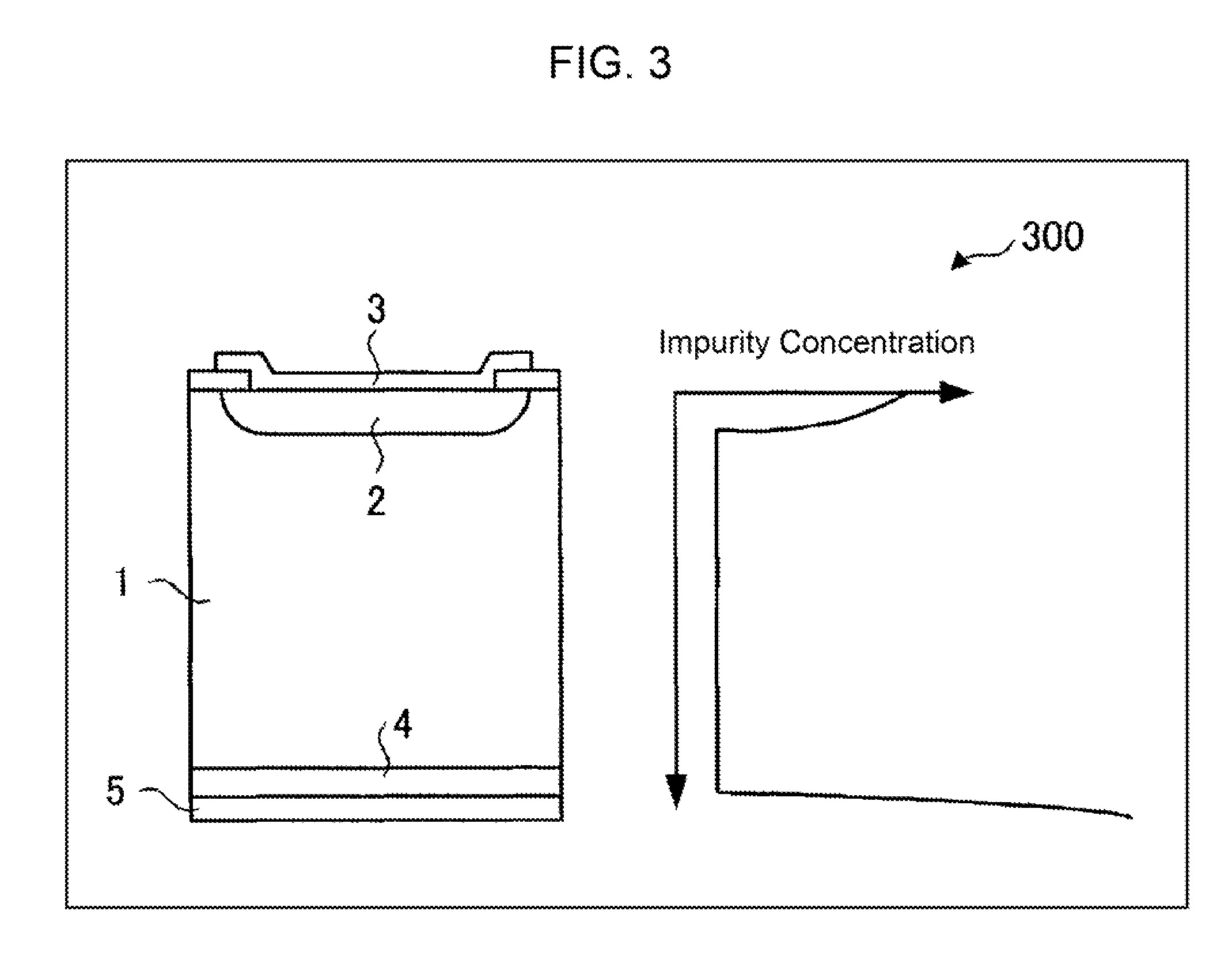Method of manufacturing semiconductor device and semiconductor device formed by the method
a manufacturing method and semiconductor technology, applied in the direction of semiconductor devices, basic electric elements, electrical apparatus, etc., can solve the problems of insufficient activation of impurity ions, inability to use inexpensive fz wafers, and inability to activate insufficiently implanted impurity ions, etc., to facilitate manufacturing a semiconductor device, reduce manufacturing costs, and reduce manufacturing costs
- Summary
- Abstract
- Description
- Claims
- Application Information
AI Technical Summary
Benefits of technology
Problems solved by technology
Method used
Image
Examples
Embodiment Construction
[0034]The present invention will be described in detail hereinafter with reference to the accompanied drawings, which illustrate the specific exemplary embodiments according to the present invention. In the following descriptions, the n-type layer or the n-type region is a layer or a region where the electrons are majority carriers. The p-type layer or the p-type region is a layer or a region where the holes are majority carriers. The superscript “+” following the letter “n” or “p” indicating the conductivity type of the layer or the region indicates that the layer or the region is doped relatively heavily. The superscript “−” following the letter “n” or “p” indicating the conductivity type of the layer or the region indicates that the layer or the region is doped relatively lightly. Throughout the following descriptions and the attached drawings, the same reference numerals are used to designate the same or like constituent elements and their duplicated explanations are omitted for...
PUM
 Login to View More
Login to View More Abstract
Description
Claims
Application Information
 Login to View More
Login to View More - R&D
- Intellectual Property
- Life Sciences
- Materials
- Tech Scout
- Unparalleled Data Quality
- Higher Quality Content
- 60% Fewer Hallucinations
Browse by: Latest US Patents, China's latest patents, Technical Efficacy Thesaurus, Application Domain, Technology Topic, Popular Technical Reports.
© 2025 PatSnap. All rights reserved.Legal|Privacy policy|Modern Slavery Act Transparency Statement|Sitemap|About US| Contact US: help@patsnap.com



